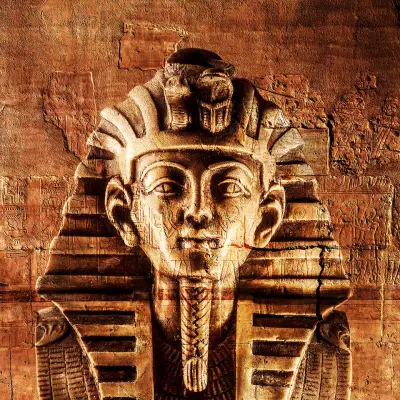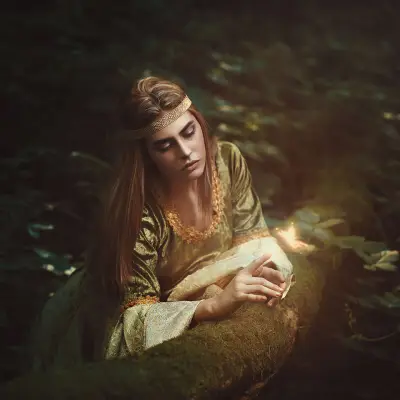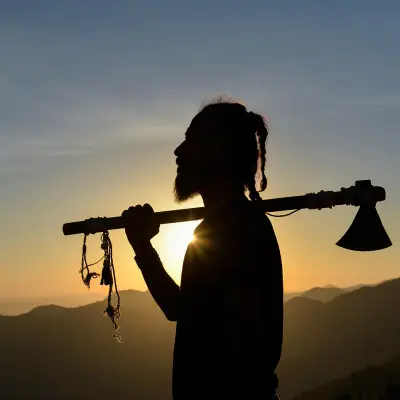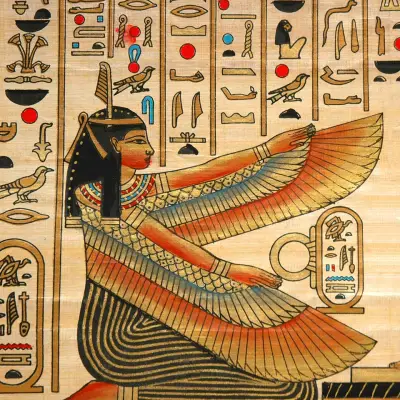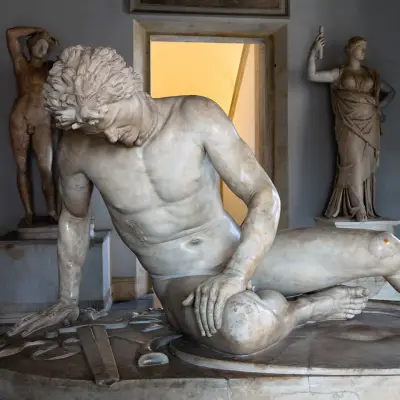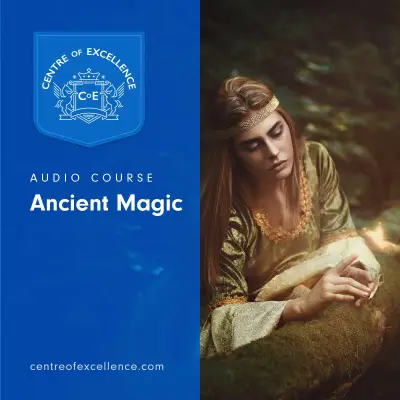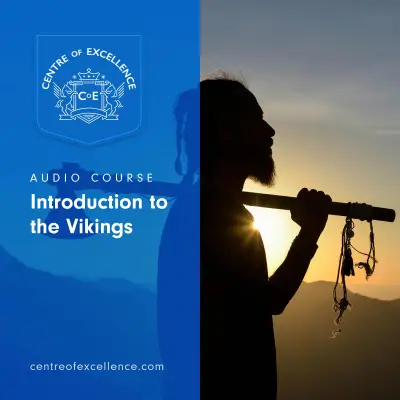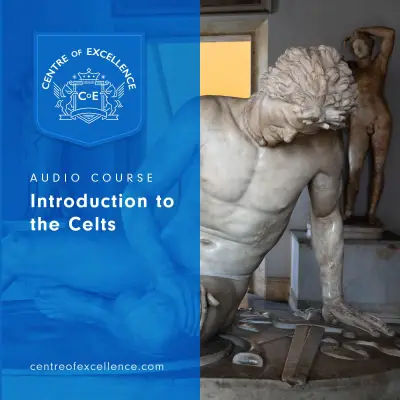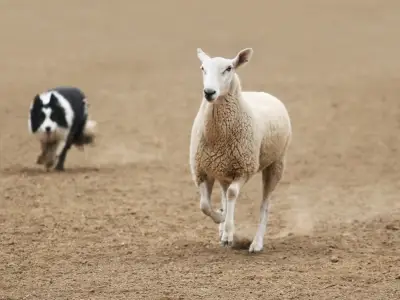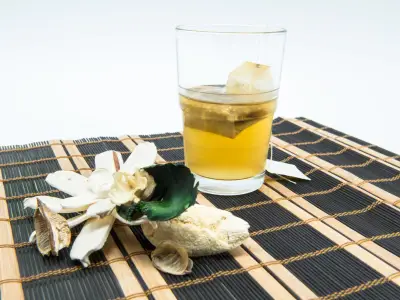If you’ve ever seen a fearsome creature with wild hair, sharp horns, and glowing eyes in Japanese art or film, you’ve probably met an Oni. Whether you're curious about their history, meanings, or the stories they star in, Oni offer a fascinating glimpse into Japanese mythology. These iconic figures, often painted as terrifying monsters or misunderstood spirits, have captivated imaginations for centuries.
But what is an Oni, really? Are Oni evil or good? And why do they appear so often in Japanese culture, tattoos, festivals, and folklore?
Jump to:
Recommended for you!
Best SellersWho Are Oni in Japanese Mythology?
Oni (鬼, pronounced “oh-nee”) are one of the most recognised creatures in Japanese mythology. Often described as large, powerful beings with horns, sharp teeth, red or blue skin, and animal-skin loincloths, they’re typically seen carrying massive iron clubs.
The word “Oni” is most commonly translated as “demon” or “ogre.” However, this doesn’t fully capture their complexity. While they are often considered a type of Japanese demon or devil, Oni are not always purely evil. Their behaviour, purpose, and meaning have evolved across centuries.
In classical mythology, Oni are known as bringers of misfortune, disease, and destruction. But over time, they’ve also been depicted as protectors, guardians, and even humorous figures.
Onis Myths
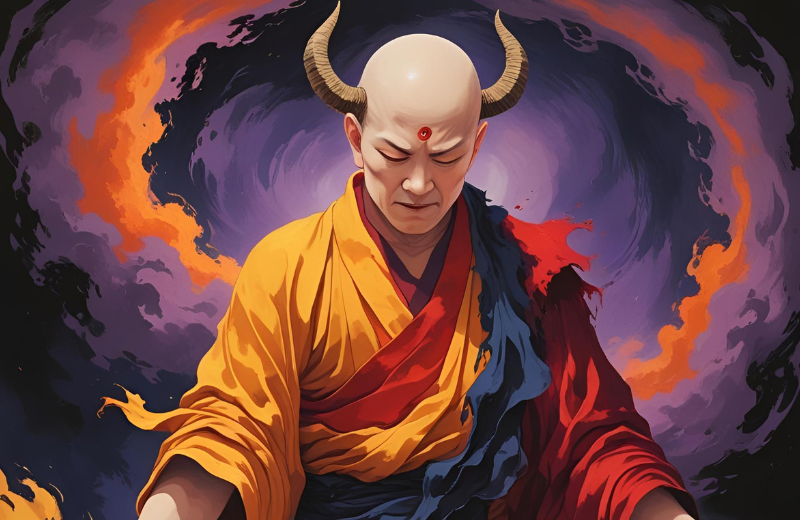
Oni appear throughout Japanese folklore in stories that range from terrifying to surprisingly sympathetic. These myths reveal different sides of the Oni, showing that they're not always just heartless monsters:
Momotarō and the Oni Island
One of the most famous tales features Momotarō, the Peach Boy, who sets out on a brave mission to Oni Island (Onigashima). With the help of a dog, monkey, and pheasant, he defeats a gang of Oni that had been raiding villages and restores peace to the land.
The Oni in this story are depicted as bandits and villains, hoarding treasure and spreading fear among the people. This myth is often told to children as a tale of courage, friendship, and the triumph of good over evil.
Fallen Monks and Wicked Souls
In some stories, Oni are not born as monsters but become them through wickedness. Corrupt monks or cruel people are said to be transformed into Oni after death, cursed to roam the underworld as tormentors of sinners.
These tales often serve as moral warnings, reminding listeners of the consequences of greed, pride, or cruelty. In Buddhist belief, Oni may act under the command of Enma-Daiō, the King of Hell, carrying out divine punishment.
The Helpful Oni
While often seen as villains, a few folktales depict Oni as protectors. In these rare cases, they guard sacred temples or aid lost travellers, proving that even so-called demons can sometimes show compassion.
These stories suggest that Oni, though fearsome, are not beyond redemption and may act out of duty or gratitude. They reveal a softer side to the myth, hinting that even the fiercest beings can have honourable intentions.
The Role of Oni in Japanese Storytelling
In literature, kabuki theatre, art, and film, Oni symbolise the darker sides of human nature—greed, rage, jealousy—but also the possibility of redemption. They’re used as teaching tools, warnings, or exaggerated versions of humanity’s flaws.
In some stories, they serve as cautionary figures. In others, they’re used to add humour or spectacle to traditional performances. Their presence has always helped drive home emotional, moral, or spiritual messages.
What Powers Do Oni Possess?
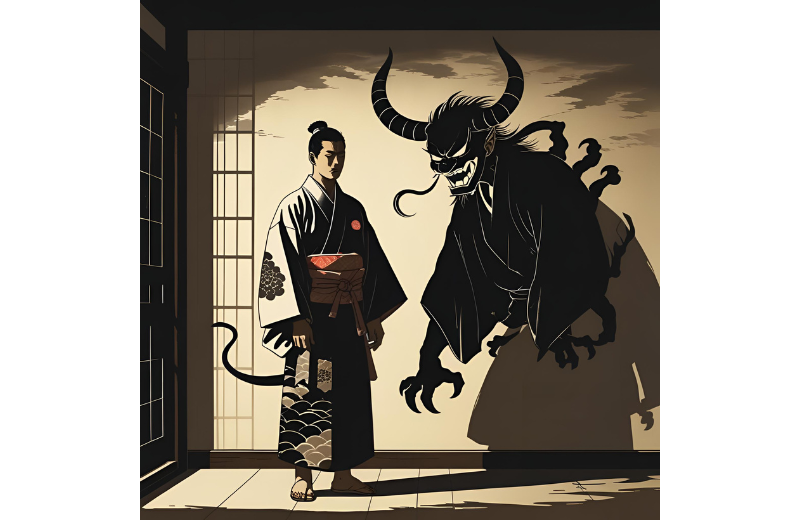
Oni are known for their terrifying presence and overwhelming strength, but their powers go far beyond brute force. Across various myths and legends, Oni demonstrate a range of supernatural abilities that make them both feared and fascinating figures in Japanese mythology:
- Superhuman Strength: Oni are often described as immensely strong, capable of crushing enemies or smashing through defences with a single blow. Their strength is often enhanced by their signature weapon: an iron club called a kanabō.
- Shapeshifting and Illusions: In some stories, Oni can disguise themselves as humans or other creatures to deceive or manipulate. This power allows them to blend in or cause chaos unnoticed until it’s too late.
- Control Over Misfortune: Oni are said to bring plagues, bad luck, storms, and disaster. They thrive in negative environments and may be drawn to places of suffering or deep emotional unrest.
- Punishment and Judgement: In Buddhist-influenced myths, Oni are tasked with punishing sinners in the underworld. They are agents of justice, ensuring that evil deeds are repaid.
- Immortality or Resistance to Death: Though not truly immortal, Oni are often portrayed as incredibly difficult to kill. Only through cleverness, ritual purification, or spiritual strength can they be defeated or banished.
Symbols Associated with Oni
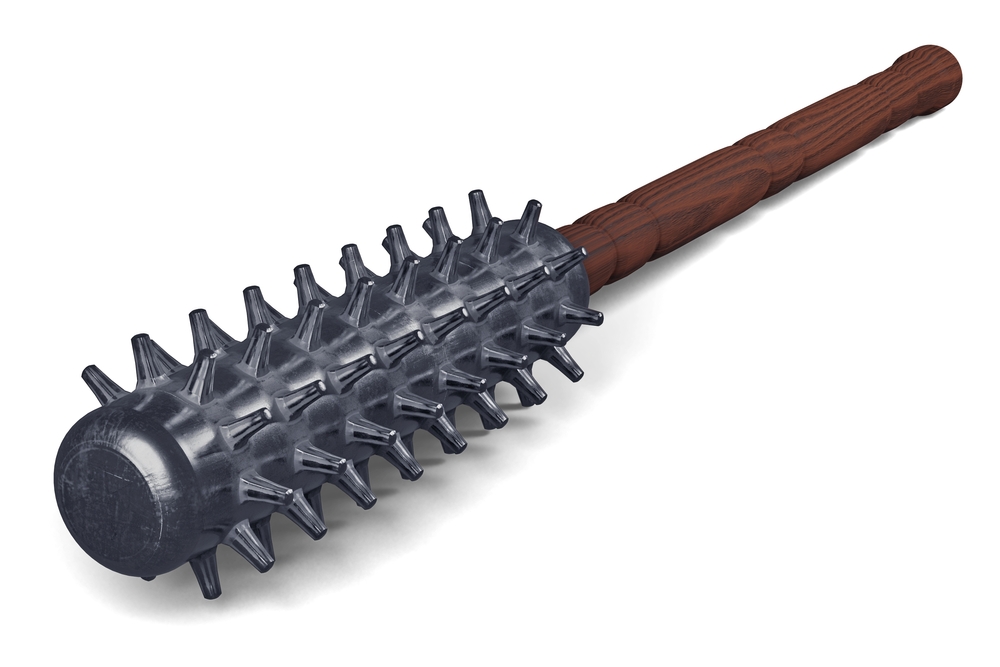
Oni are deeply symbolic figures in Japanese culture, and several visual elements are closely tied to their image. These symbols help to identify Oni and reflect their mythological significance, appearing frequently in festivals, artwork, and protective talismans:
- Iron Clubs (Kanabō): Perhaps the most iconic symbol of Oni, the iron club represents their brute force and their role as punishers. The phrase "giving a kanabō to an Oni" means giving great power to someone who’s already powerful.
- Red and Blue Skin: Red Oni are often associated with fiery rage, aggression, and violence, while Blue Oni are linked to intelligence, melancholy, or more passive strength. This colour symbolism adds depth to how Oni are interpreted in art and stories.
- Horns and Fangs: Oni are usually depicted with one or two horns and sharp, fang-like teeth. These features signal their demonic nature and warn of their dangerous powers.
- Tiger-Skin Loincloths: Many Oni are shown wearing loincloths made from tiger skin, linking them with wildness, primal energy, and the untamed aspects of nature.
- Oni Masks: Worn during festivals like Setsubun, these masks are used to ward off evil or bad fortune. Though frightening in appearance, they play a protective role in rituals and performances.
- Roaring Faces and Wide Eyes: These exaggerated features are meant to inspire fear and assert dominance. They also reflect the Oni’s intense emotions, whether wrath, pain, or sorrow.
Oni Lineage and Connections
There isn’t a single Japanese god named Oni. Rather, Oni appear across many myths, tied to deities, spirits, and supernatural forces.
They are often seen as enforcers of hell’s justice, working under Enma-Daiō, the Buddhist King of Hell. This connection gives Oni a divine purpose: punishing wrongdoers and maintaining cosmic order.
They’re also grouped with yōkai—supernatural beings in Japanese folklore. This places them in the same family as kitsune (fox spirits), tengu (bird-like warriors), and other mysterious creatures.
Why Are Oni Special?
Unlike many mythological beings, Oni reflect both external threats and internal struggles. They are frightening monsters, but also metaphors for anger, guilt, and fear.
This blend of folklore, religion, and psychology makes them stand out among Japanese evil spirits. They teach lessons, protect homes, and add depth to myths. You could say they’re the embodiment of both chaos and justice.
And despite their frightening appearance, you might find yourself feeling sympathy for them. Their stories often involve betrayal, suffering, or transformation, reminding us that even demons have backstories.
Oni in Modern Culture

From anime and video games to films and manga, Oni continue to appear in new forms. In popular series like Inuyasha, Demon Slayer, and Nioh, you’ll see versions of oni demons reimagined for modern audiences.
Their visual appeal and deep symbolism also make them popular in tattoo culture, fashion, and video game bosses. Even samurai were known to use Oni symbols. Some wore stylised masks resembling Oni in battle, designed to frighten enemies and channel the strength of these mythical beasts.
Oni Worship and Legacy
Though not worshipped in the traditional sense, Oni are respected and feared in religious and spiritual practices. They are often found in Buddhist temples, festivals, and as protective charms.
During Setsubun in February, families still practice the ritual of banishing Oni from their homes. Children throw beans, and parents (or teachers) often wear Japanese oni masks to play the part of the demon being exorcised. It’s a moment of fun, but also deeply rooted in cultural symbolism.
Recommended for you!
Best SellersFrequently Asked Questions About Oni
How do you pronounce Oni?
Oni is pronounced "oh-nee", with the emphasis on the first syllable, and it's a simple, two-syllable word that’s easy to remember.
What are the three types of Oni?
There’s no fixed list, but some stories refer to red Oni, blue Oni, and black Oni, each symbolising different traits, like rage, calmness, or darkness.
What weaknesses do Oni have?
In stories, Oni can be outsmarted, banished by rituals, or defeated by heroes with courage and purity, showing that strength alone isn’t everything.
What can an Oni not do?
Oni may be strong, but they’re not invincible; they can’t resist spiritual purity, sacred rituals, or deep compassion, which strip them of their power.
Can you summon an Oni?
Traditionally, Oni appear in response to negative energy rather than being summoned intentionally, as they’re drawn to suffering or bad deeds.
Do Oni protect humans?
In some stories, Oni do protect humans, especially in temple legends or folktales where reformed Oni protect the righteous, acting as unlikely guardians of good.
Are Oni demons or spirits?
Oni are supernatural beings—sometimes described as demons, sometimes spirits, and often as a mix of the two, depending on the tale.
What is the most powerful type of Oni?
That depends on the story, but red Oni are often seen as the strongest physically, while blue Oni may have more intelligence or magic, giving them an edge in cunning.
What does “Tora Oni” mean in English?
Tora Oni translates roughly to “Tiger Demon” or “Tiger Oni”, often used to emphasise fierce strength and wild, untameable energy.
What does “Ao Oni” mean in English?
“Blue Oni” – “Ao” means blue, often representing a cooler or more thoughtful nature, in contrast to the fiery red Oni.
Study Japanese Mythology for £29
Interested in exploring more about ancient Japanese beliefs, traditions, and divine figures like Oni? The Introduction to Japanese History and Culture Diploma Course from Centre of Excellence is the perfect place to start. For a discounted price of £29, you'll learn about he spiritual stories, practices, and philosophies that shaped Japan’s past and continue to influence it today.
